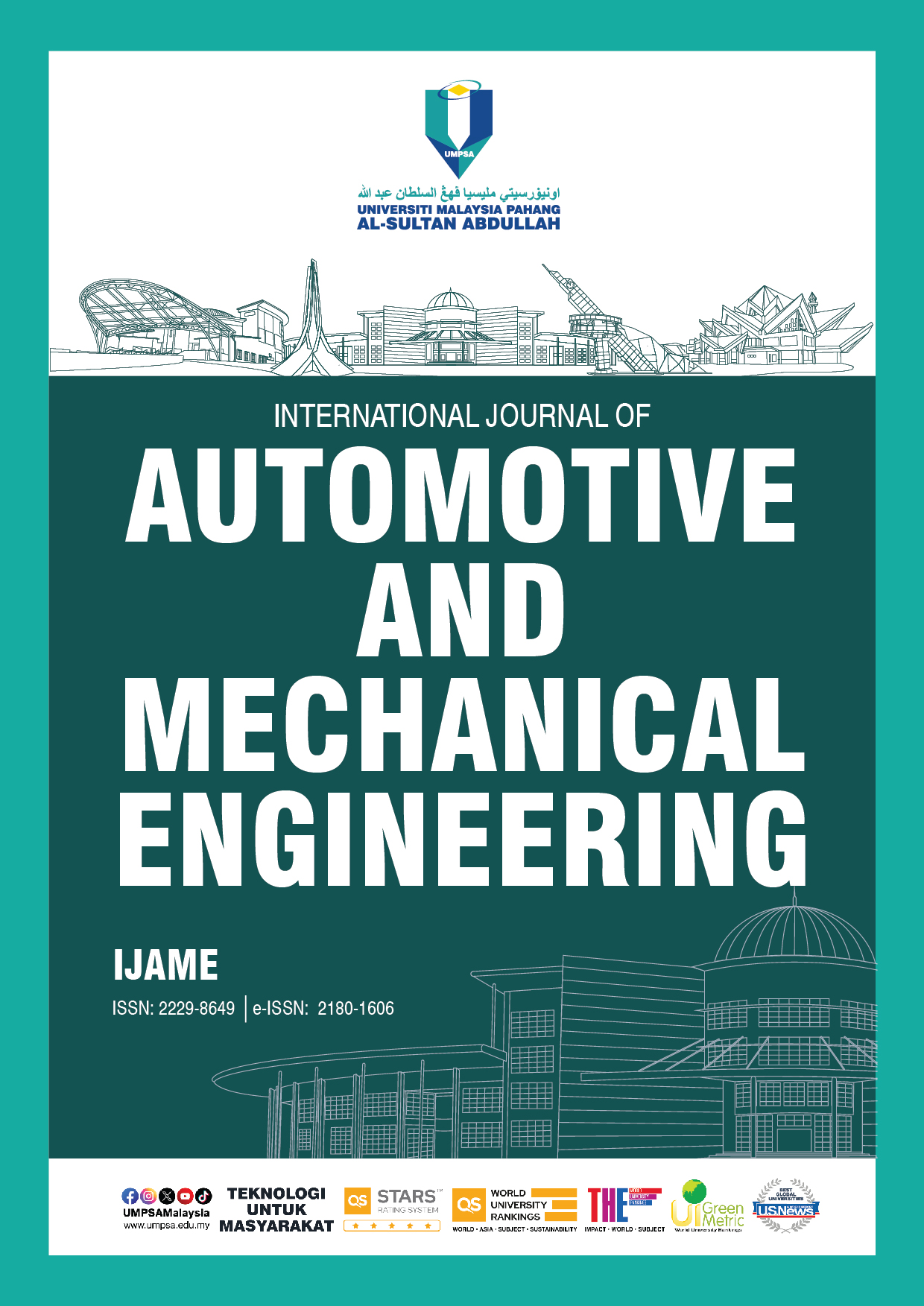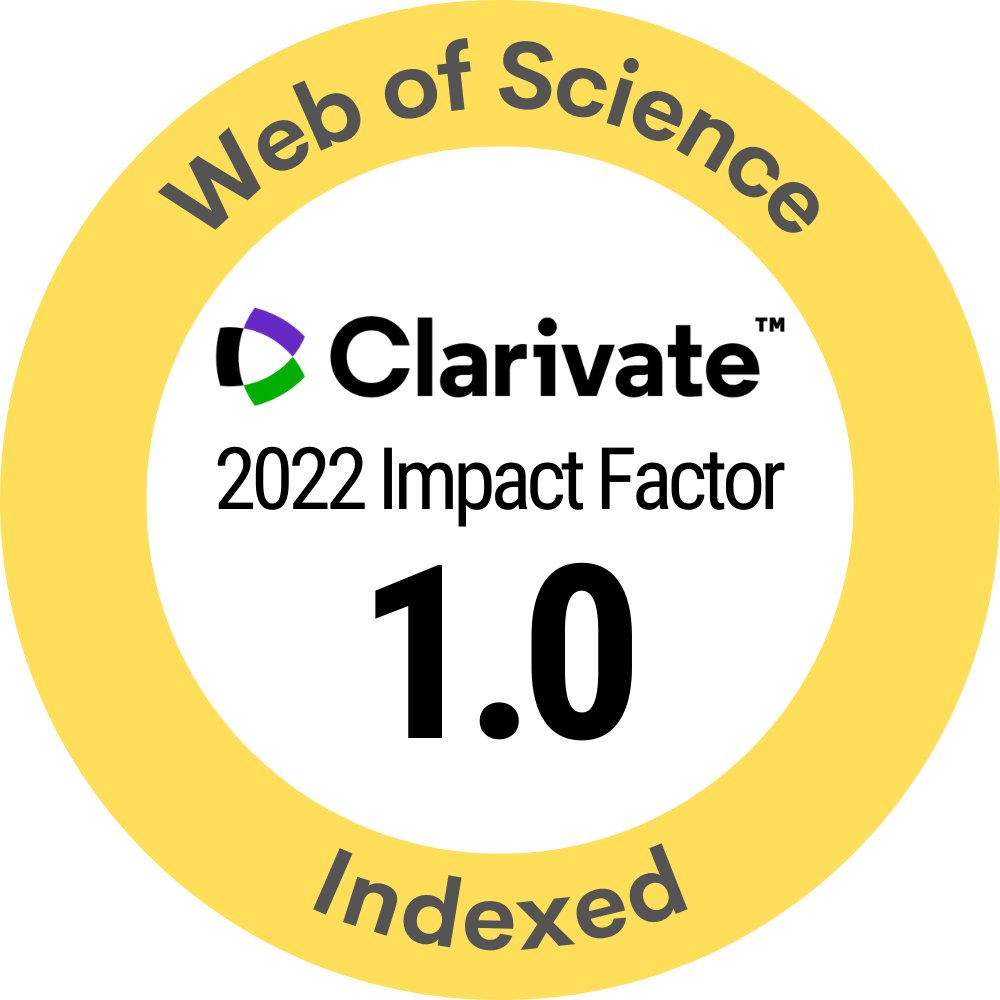Optimization Design of Electromechanical Servo System Based on Dual Motor Control Algorithm
DOI:
https://doi.org/10.15282/ijame.22.1.2025.16.0933Keywords:
Electromechanical, Servo system, DMCA, Accuracy, ControlAbstract
The control accuracy and performance of current servo systems are greatly challenged. For this reason, how to effectively improve the control effect of the servo system and encoder accuracy, has become the focus of current research. Therefore, the research aims to improve the control effect and encoder accuracy of electromechanical servo systems. Moreover, dual-motor control algorithm is innovatively used to optimize and analyze the electromechanical servo system. The study achieves more accurate load control by coordinating the synchronized operation of the two motors, which in turn improves the overall performance of the motor servo system. The dual-motor control algorithm achieves more precise control of the load by coordinating the synchronized operation of the two motors, thus enhancing the overall performance of the motor servo system. The results show that after the algorithm optimization, the maximum rotational angular velocity of the system reaches 160 rpm, and the angular velocity changes significantly in the time range of 0-50 ms. This shows that the use of a dual-motor control algorithm can effectively improve the motor control capability. This is important and significant for the research of motor servo systems.
References
[1] S. Autsou, K. Kudelina, T. Vaimann, A. Rassõlkin, and A. Kallaste, “Principles and methods of servomotor control: Comparative analysis and applications,” Applied Sciences, vol. 14, no. 6, pp. 2579-2581, 2024.
[2] Y. Long, J. Du, K. Yang, and S. Yuan, “Modelling of a direct‐driven electromechanical actuation system based on the Lagrange-Maxwell equation,” IET Electric Power Applications, vol. 15, no. 11, pp. 1438-1451, 2021.
[3] J. Huang, Z. Song, S. Li, and J. Ruan, “Claw‐pole magnetic levitation torque motor for 2D valve with automatic neutral adjustment,” IET Electric Power Applications, vol. 17, no. 10, pp. 1285-1303, 2023.
[4] H. Jin, X. Zhao, and T. Wang, “Adaptive backstepping complementary sliding mode control with parameter estimation and dead‐zone modification for PMLSM servo system,” IET Power Electronics, vol. 14, no. 4, pp. 785-796, 2021.
[5] S. Thangavel, C. Maheswari, and E. B. Priyanka, “Dynamic modeling and control analysis of industrial electromechanical servo positioning system using machine learning technique,” Journal of Testing and Evaluation, vol. 49, no. 4, pp. 2425-2440, 2021.
[6] Aimasso, P. C. Berri, and M. D. L.Dalla Vedova, “A genetic-based prognostic method for aerospace electromechanical actuators,” International Journal of Mechanics and Control, vol. 22, no. 2, pp. 195-206, 2021.
[7] H. Zhang, J. Y. Zhao, Y. F. Wang, Z. H. Zhang, H. G. Ding, and J. X. Man, “Electro-hydraulic position servo system based on sliding mode active disturbance rejection compound control,” Proceedings of the Institution of Mechanical Engineers, Part C: Journal of Mechanical Engineering Science, vol. 236, no. 5, pp. 2089-2098, 2022.
[8] X. Chen, W. Deng, J. Yao, X. Liang, and Z. Zhang, “Robust indirect adaptive control of electromechanical servo systems with uncertain time-varying parameters,” International Journal of Control, vol. 96, no. 4, pp. 870-883, 2023.
[9] H. Hu, Q. Zhang, J. Fang, T. Wang, and J. Wei, “Practical adaptive robust tracking control of the dual-valve parallel electro-hydraulic servo system with reduced-order model,” Transactions of the Institute of Measurement and Control, vol. 46, no. 3, pp. 501-512, 2024.
[10] M. S. Hossain, I. Sultan, T. Phung, and A. Kumar, “A Literature Review of the Design, Modeling, Optimization, and Control of Electro-Mechanical Inlet Valves for Gas Expanders,” Energies, vol. 17, no. 18, pp. 4569-4570, 2024.
[11] L. Zhang, C. Zhang, P. Wang, M. Shabaz, S. M. G., and K. H. Kishore, “Realization of optimization design of electromechanical integration PLC program system based on 3D model,” Nonlinear Engineering, vol. 12, no. 1, p. 20220252-20220253, 2023.
[12] A. A. Hashim, N. M. Ghani, S. Ahmad, and A. N. Nasir, “System Identification and Control of Linear Electromechanical Actuator Using PI Controller Based Metaheuristic Approach,” Applications of Modelling and Simulation, vol. 8, no. 3, pp. 213-224, 2024.
[13] G. Sun, J. Zhao, and Q. Chen, “Observer‐based compensation control of servo systems with backlash,” Asian Journal of Control, vol. 23, no. 1, pp. 499-512, 2021.
[14] G. Yang, T. Zhu, F. Yang, L. Cui, and H. L. Wang, “Output feedback adaptive RISE control for uncertain nonlinear systems,” Asian Journal of Control, vol. 25, no. 1, pp. 433-442, 2023.
[15] X. Yang, A. Shi, J. Xuan, and Z. Yang, “Analytical prediction and analysis of the detent force with the feedback harmonics for the direct drive motion system,” IET Power Electronics, vol. 16, no. 13, pp. 2192-2202, 2023.
[16] G. Yang and J. Yao, “Multilayer neurocontrol of high‐order uncertain nonlinear systems with active disturbance rejection,” International Journal of Robust and Nonlinear Control, vol. 34, no. 4, pp. 2972-2987, 2024.
[17] Bai, Z. Li, J. Y. Zhang, D. Q. Zhang, and C. W. Fei, “Research on multiple‐state industrial robot system with epistemic uncertainty reliability allocation method,” Quality and Reliability Engineering International, vol. 37, no. 2, pp. 632-647, 2021.
[18] N. Nahak, O. Satapathy, and P. Sengupta, “A new optimal static synchronous series compensator‐governor control action for small signal stability enhancement of random renewable penetrated hydro‐dominated power system,” Optimal Control Applications and Methods, vol. 43, no. 3, pp. 593-617, 2022.
[19] H. Shi, R. Li, X. Bai, Y. Zhang, L. Min, D. Wang, and Y. Lei, “A review for control theory and condition monitoring on construction robots,” Journal of Field Robotics, vol. 40, no. 4, pp. 934-954, 2023.
[20] Yang, X. Hai, Y. Ren, J. Cui, K. Li, and S. Zeng, “A hybrid fault prediction method for control systems based on extended state observer and hidden Markov model,” Asian Journal of Control, vol. 25, no. 1, pp. 418-432, 2023.
[21] J. E. Naranjo, A. Valle, A. Cruz, M. Martín, M. Anguera, P. García, and F. Jiménez, “Automation of haulers for debris removal in tunnel construction,” Computer‐Aided Civil and Infrastructure Engineering, vol. 38, no. 14, pp. 2030-2045, 2023.
[22] H. Qiang, M. A. Ikbal, and S. Khanna, “Prediction of energy consumption of numerical control machine tools and analysis of key energy‐saving technologies,” IET Collaborative Intelligent Manufacturing, vol. 3, no. 3, pp. 215-223, 2021.
[23] H. Mokayed, T. Z. Quan, L. Alkhaled, and V. Sivakumar, “Real-time human detection and counting system using deep learning computer vision techniques,” Artificial Intelligence and Applications,vol. 1, no. 4, pp. 221-229, 2023.
[24] X. Dong, Q. Fan, and D. Li, “Detrending moving-average cross-correlation based principal component analysis of air pollutant time series,” Chaos, Solitons & Fractals, vol. 172, p. 113558, 2023.
[25] K. Udaichi, R. Chinaveer Nagappan, M. Garcia‐Torres, P. B. Divakarachari, and S. N. Bhukya, “Large‐scale system identification using self‐adaptive penguin search algorithm,” IET Control Theory & Applications, vol. 17, no. 17, pp. 2292-2303, 2023.
[26] J. Shi, P. Zhang, H. Hou, W. Cao, and L. Zhou, “Optimization of servo accuracy of Y axis of dicing saw based on iterative learning control,” International Journal of System Assurance Engineering and Management, pp. 1-3, 2024.
[27] M. Liu, C. Li, Y. Lei, and P. Dai, “PID control parameter optimization of servo system based on particle swarm optimization,” Journal of Physics: Conference Series, vol. 2460, no. 1, p. 012166-012167, 2023,
[28] X. Wang, B. Chen, J. Dhupia, J. Bronlund, J. Han, W. Xu. “Conceptualization and mechanical design of a cam-follower based chewing robot with three oral chambers,” IEEE Access, vol. 5, no. 10, pp. 2169-3536, 2025.
[29] H. Hua, X. Wu, X. Chen, H. Kong, Y. Sun, Q. Yang, M. C. Tavares, P. Naidoo. “Carbon reduction oriented regional integrated energy system optimization via cloud-edge cooperative framework.” CSEE Journal of Power and Energy Systems, vol. 10, no. 1, pp. 1-12, 2025.
Downloads
Published
Issue
Section
License
Copyright (c) 2025 The Author(s)

This work is licensed under a Creative Commons Attribution-NonCommercial 4.0 International License.







